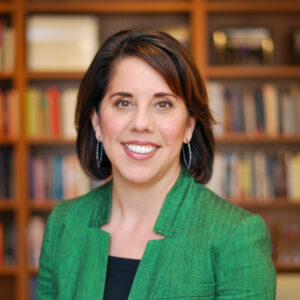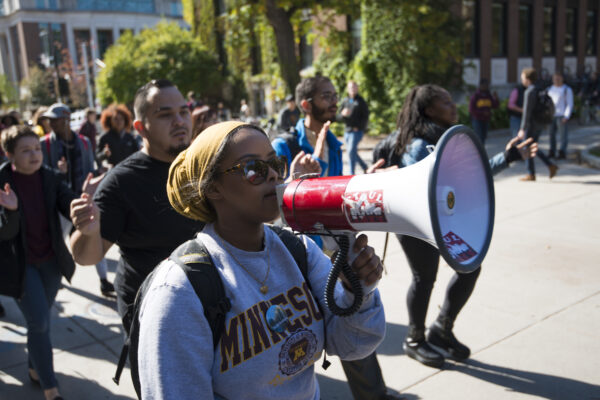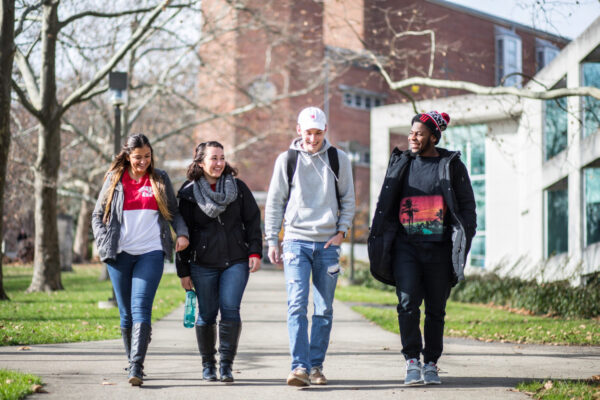By Lorelle L. Espinosa, Jennifer R. Crandall, and Elizabeth Howard
In February of this year, ACE fielded a national survey of college and university presidents to better understand their thoughts and experiences with the pressing issues of free speech and campus inclusion. We received responses from 471 presidents, the majority of whom lead four-year institutions, where these tensions are most visible and salient.*
In collaboration with the John S. and James L. Knight Foundation, we compared our findings with Knight and Gallup’s 2017 survey of college students on the First Amendment. Overall, there were more similarities than differences; but the differences don’t surprise. It may be that campus leaders and their students are more aligned on First Amendment issues than we believe or the media often depicts.
Inclusion and Free Speech as Complementary Concepts
Students and presidents overwhelmingly agree that inclusion and free speech are important to a democracy. While this finding is encouraging, we also know that the tension is not over whether inclusion and speech are both important—they are. It’s what campus communities do when trying to achieve both ideals in the face of conflict.
What they shouldn’t do—and we’ve heard this from both presidents and students—is pit inclusion and speech against each other.
In her reflections on the Knight survey findings, Harvard College sophomore Salma Abdelrahman calls such a move a false binary. “This kind of framing,” she said, “is a straightjacket on our creativity and stifles our ability to address issues around diversity and inclusion without infringing upon First Amendment rights.”
[Click each image to view and download hi-resolution versions]
When pressed to choose between inclusion and free speech, presidents lean more toward free speech than do students, but majorities in both groups have a strong preference for allowing students to be exposed to all types of speech even if they may find it offensive or biased.
Many of the presidents we work with understand and sympathize with the harm that words cause. Still, they adamantly favor the need for institutions to hold up the First Amendment, including as a response to hateful rhetoric. As Clayton Spencer, president of Bates College, said in response to the Knight-Gallup survey, “Many students also see words rightly as having the power to cause harm, so that they may not always accept the notion that the cure for offensive speech is ‘more speech.’” Chancellor Dorothy Leland of the University of California at Merced acknowledged “this is a challenging balance act. It is difficult for students—and others—to remain committed to free expression when that expression is hurtful or offensive.”
Among the student responses, while supportive of complex, robust debate, University of Virginia Student Council President Sarah Kenny believes hate speech is a “serious assault to [one’s] dignity” and “both impedes the truth-seeking charge of institutions of higher education and compromises the integrity of our democracy.”

Inclusion and Free Speech in Practice
Certain stories about campus conflicts around these issues attract dramatic media attention, but data from both our survey and Knight’s show that the noisiest stories may not represent what is happening most frequently on campuses. Both students and presidents who have experience with campus protests largely indicated that issues of diversity and inclusion—not controversial speakers—are fueling demonstrations. And as Sanford Ungar, director of the Georgetown Free Speech Project points out, public perception on such speakers is off base in more ways than one.

The understanding that inclusion and free speech are core to a democracy extends to all kinds of speech, but not in the same way for presidents as it does for students. Eighty-five percent of presidents view shouting down speakers or trying to prevent them from talking as unacceptable—but this action is more ambiguous for students.
For Ron Crutcher, president of the University of Richmond, this finding on shouting down speakers is particularly concerning because it “prohibits the speaker from exercising his/her/their First Amendment rights, and restricts the freedoms of all those who have come to hear the speech. There are many acceptable ways to show displeasure with a speaker, such as silent walkouts, signage (that doesn’t restrict views), or peaceful protests in assigned spaces. But shouting down a speaker fails to respect the First Amendment rights of everyone in the room.”
Over one-third of students said that shouting down speakers to try to prevent them from talking was sometimes acceptable, compared to 15 percent of presidents. Both groups, however, are more or less in lock step in their views on distributing pamphlets or literature on controversial issues and denying news media access to cover a protest or rally on campus.
No president we heard from in response to Knight’s findings thought that students are deliberately undermining the First Amendment. Rather, they recognize the complexity of understanding the nuances of our First Amendment freedoms, and most believe that it is the role of campus leaders and faculty to educate students about these nuances. As Howard Gillman, chancellor of the University of California Irvine, pointed out, students “have very little basic civic knowledge about the arguments in favor of free speech, or the history of free speech, or the role that free speech has played to advance the interests of marginalized and vulnerable populations.”
[Click to expand]

Presidents and students think they themselves—and students at their own colleges—are doing a good job of seeking out and listening to viewpoints different from their own. Students at other colleges, however, are perceived as being less adept at listening to these other voices. While this is not an uncommon survey response—thinking that things are better in your backyard than elsewhere—it does underscore the great divisions Americans are feeling now.

Challenges and opportunities abound as members of the higher education community participate in the discourse that defines a vibrant democratic society, particularly during such a polarized time. In this context, higher education needs to acknowledge and respond to student issues around safety, security, and inequality while promoting and modeling its commitment to free speech. Our data suggest that presidents and students share more common ground than they may realize, which can serve as a base for meaningful dialogue. It is incumbent upon higher education to create diverse, inclusive campuses where civic discourse takes root and flourishes.
President Jonathan Alger of James Madison University in Virginia told us that this includes “demonstrate[ing] that free expression and inclusivity are not mutually exclusive concepts—while emphasizing that history has shown that offensive ideas cannot be suppressed or eliminated with restrictions on speech. The freedoms guaranteed by the Constitution will only survive so long as each new generation learns and values them.”
As we create spaces for civic discourse, we also must remind ourselves that students are just beginning to learn how to thoughtfully engage in these spaces. Many presidents and other senior campus officials also are grappling with how to stay ahead of—and respond—to conflict while at the same time sowing the seeds of inclusion. We’re all on a learning curve, and where better to learn than on a college campus.
These data will be explored further as part of a larger project ACE is engaged in with support from the John S. and James L. Knight Foundation. A report due out this fall will share learnings from a series of national convenings with campus leaders on how institutions are managing tensions between campus inclusion and free expression.
*Notes:
Of the 471 college and university presidents that responded to this survey, 78 percent are leaders of four-year institutions (40 percent public and 60 percent private) and 22 percent are leading two-year institutions (97 percent public and 3 percent private). Regarding institution size, around 36 percent of presidents lead institutions that enrolled less than 3,000 undergraduate and graduate students, about one-third led institutions with total enrollments between 3,000 and 10,000 students, and 31 percent led institutions with more than 10,000 students.
Where applicable, figure percentages might not total 100 due to rounding.
If you have any questions or comments about this blog post, please contact us.




